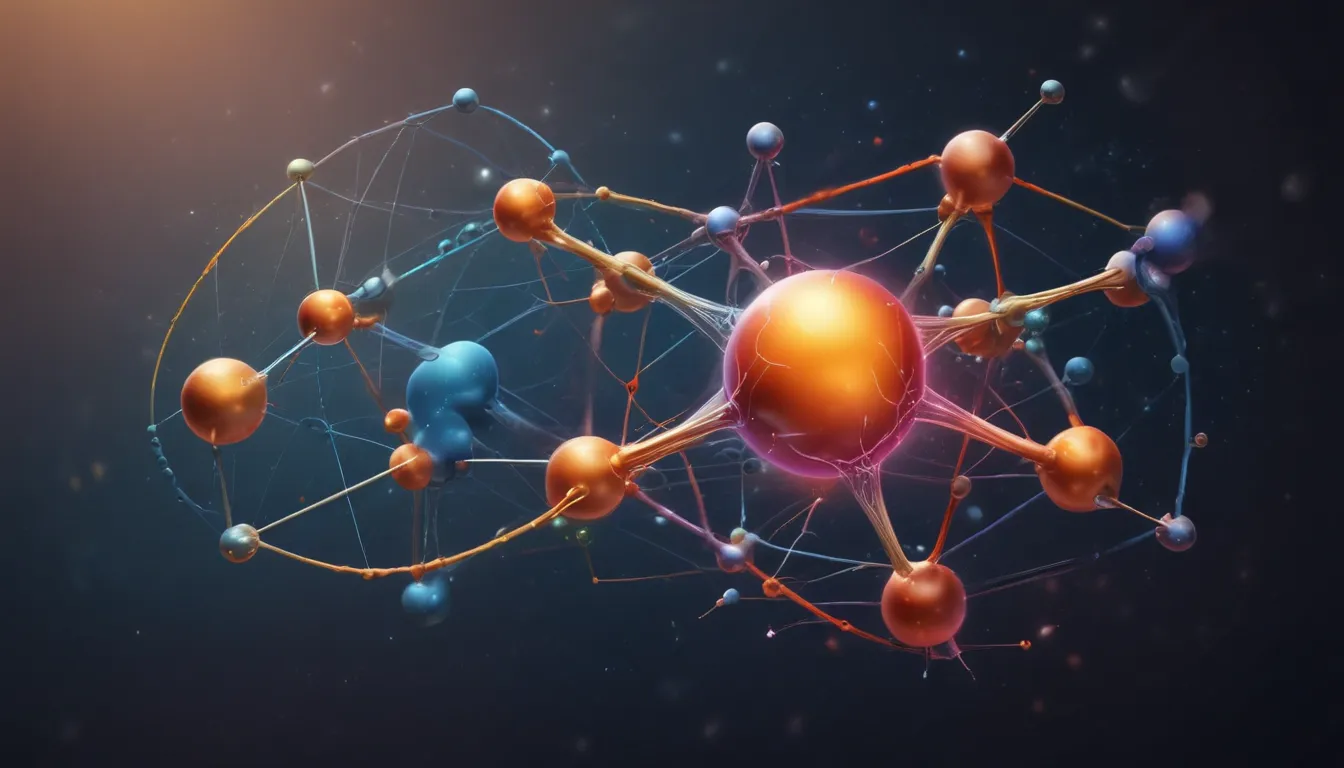A Note About Images: The images used in our articles are for illustration purposes only and may not exactly match the content. They are meant to engage readers, but the text should be relied upon for accurate information.
Have you ever wondered how atoms bond to form molecules or what makes certain substances more stable than others? The key lies in molecular orbital diagrams – essential tools in understanding chemical bonding and molecular properties. Whether you’re a curious chemistry enthusiast or a budding student, delving into the realm of molecular orbital diagrams can be an enlightening experience. In this guide, we will unravel 17 fascinating facts about molecular orbital diagrams, shedding light on their significance in the vast world of chemistry. From deciphering hybridization to exploring bonding and antibonding molecular orbitals, get ready to witness the wonders of chemical bonding like never before. Let’s embark on a journey into the captivating universe of molecular orbital diagrams and uncover the secrets they hold!
Unveiling the Intricacies of Molecular Orbital Diagrams
A molecular orbital diagram provides a visual representation of how atomic orbitals from different atoms combine to form molecular orbitals. This arrangement offers insights into the bonding and properties of molecules, allowing us to discern their structural characteristics.
Decoding Bonding and Antibonding Orbitals
In a molecular orbital diagram, bonding orbitals reside at lower energy levels, while antibonding orbitals occupy higher energy levels. The interaction between these orbitals dictates the stability and strength of the bond, shaping the molecular structure.
Conservation of Orbitals Principle
When atomic orbitals merge to create molecular orbitals, the total number of molecular orbitals produced equals the number of atomic orbitals involved. This principle, known as the conservation of orbitals, underscores the preservation of orbital integrity during molecular formation.
Predicting Bond Order through Molecular Orbital Diagrams
Upon scrutinizing the molecular orbital diagram, one can discern the bond order, which serves as an indicator of bond stability and strength. A higher bond order signifies a stronger bond, elucidating the robustness of molecular connections.
Unraveling the Aufbau Principle
Echoing the Aufbau principle, electrons populate the lowest energy molecular orbitals before ascending to higher energy levels. This hierarchical arrangement aids in comprehending the electronic configuration of molecules and their bonding patterns.
Intricacies of Diatomic Molecules in Molecular Orbital Diagrams
Within diatomic molecules, molecular orbital diagrams encompass sigma (σ) and pi (π) orbitals. While sigma orbitals exhibit cylindrical symmetry along the molecular axis, pi orbitals manifest as perpendicular to the molecular axis, elucidating the distinct nature of molecular bonds.
Illuminating Bond Length and Strength
The organization and overlap of atomic orbitals in a molecular orbital diagram unveil essential facets such as bond length and strength. Bond length pertains to the distance between bonded atom nuclei, while bond strength denotes the energy necessitated to sever the bond, capturing the essence of molecular stability.
Evaluating Molecule Stability through Orbital Diagrams
A stable molecule embodies a lower energy state relative to its constituent atoms. By evaluating the energy levels within the molecular orbitals, the stability of the molecule can be assessed, offering crucial insights into its structural robustness.
Foretelling Chemical Reactivity through Orbital Diagrams
Chemical reactivity hinges on bond formation and rupture, a domain elucidated by molecular orbital diagrams. These diagrams provide a framework for understanding the stability and reactivity of molecules, facilitating the prediction of chemical transformations.
Navigating the Terrain of Hybridization
Hybridization orchestrates the amalgamation of atomic orbitals to engender hybrid orbitals, shaping the molecular orbital diagram and bonding attributes of a molecule. This phenomenon plays a pivotal role in elucidating molecular geometry and structural motifs.
Demystifying Paramagnetism and Diamagnetism
Paramagnetic substances, punctuated by unpaired electrons, gravitate towards magnetic fields, whereas diamagnetic counterparts, featuring paired electrons, repel weakly from magnetic fields. Molecular orbital diagrams unravel the presence or absence of unpaired electrons, demystifying the magnetic properties of molecules.
Symmetry’s Influence on Orbital Diagrams
The symmetry of a molecule profoundly impacts the alignment of atomic orbitals and the resultant molecular orbital diagram. This symmetry dictates the nature and distribution of bonding and antibonding orbitals, shaping the structural blueprint of molecules.
Envisioning Resonance through Orbital Diagrams
Resonance manifests when a molecule showcases diverse electron distribution patterns. Molecular orbital diagrams capture the electron delocalization, a cornerstone in comprehending resonance structures and their impact on molecular stability.
Analyzing Conjugated Systems via Orbital Diagrams
Conjugated systems, characterized by alternating single and multiple bonds, are paramount in organic chemistry. Molecular orbital diagrams serve as indispensable tools in dissecting the stability and electronic essence of these molecules, illuminating the intricacies of molecular resonance.
Unveiling Aromaticity’s Domain
Aromatic molecules epitomize remarkable stability due to the extensive delocalization of pi electrons. Molecular orbital diagrams provide a lens into the distinctive bonding attributes of aromatic compounds, unraveling their exceptional stability and molecular nuances.
Unveiling Computational Methods in Orbital Diagram Construction
Modern computational methodologies, such as the Hartree-Fock method or density functional theory (DFT), oblige in computing molecular orbital energies and fabricating molecular orbital diagrams. These cutting-edge tools empower researchers to delve into molecular intricacies with precision and insight.
Pioneering the Frontiers of Theoretical Chemistry
Molecular orbital diagrams stand as beacons in theoretical and computational chemistry, engendering a profound impact in predicting and explicating molecular properties, behaviors, and interactions. They serve as indispensable aides in the scientific pursuit of unraveling the enigmatic realm of molecules.
Embracing the Astonishing Tapestry of Molecular Orbital Diagrams
The world of molecular orbital diagrams beckons, inviting you to explore the intricate dance of electrons and atoms that underpins the essence of chemical bonding. Unveil the mysteries of chemical resonance, stability, and reactivity, guided by the illuminative beacon of molecular orbital diagrams. Step into the realm of theoretical chemistry, where each discovery unlocks a new facet of the chemical universe. Embrace the wonder and complexity of molecular structures, as revealed through the captivating lens of molecular orbital diagrams.
FAQs
-
Q: What is a molecular orbital diagram?
A: A molecular orbital diagram is a visual portrayal of the electron arrangement in different molecular orbitals resulting from the fusion of atomic orbitals. -
Q: How is a molecular orbital diagram constructed?
A: Molecular orbital diagrams are crafted by integrating atomic orbitals from participating atoms through the tenets of quantum mechanics. These molecular orbitals are tiered by energy levels, with lower levels proximal to the nucleus. -
Q: What insights can be gleaned from a molecular orbital diagram?
A: Molecular orbital diagrams unveil the bonding and antibonding interactions among atoms within a molecule, offering comprehension on stability, bond strength, and reactivity. -
Q: How does a molecular orbital diagram influence molecular properties?
A: The electron dispersion across varied molecular orbitals shapes properties like bond length, strength, polarity, and stability, delineating the molecular makeup and attributes. -
Q: Why is grasping molecular orbital diagrams imperative?
A: Understanding molecular orbital diagrams is critical for prognosticating and interpreting chemical reactions, designing novel compounds, and delving into molecular behavior. It provides a window into the electronic framework of molecules, shaping their intrinsic properties.
The realm of molecular orbital diagrams beckons, promising a trove of scientific marvels waiting to be unveiled. Embark on this captivating journey into the heart of chemistry, where atoms dance in harmony to forge intricate molecular bonds. As you navigate the intricacies of molecular structures, let the enigmatic beauty of molecular orbital diagrams inspire your curiosity and deepen your understanding of the chemical world. Embrace the complexities and revelations that await you in this wondrous domain, and discover the extraordinary tapestry of molecular bonding that shapes our scientific landscape.






